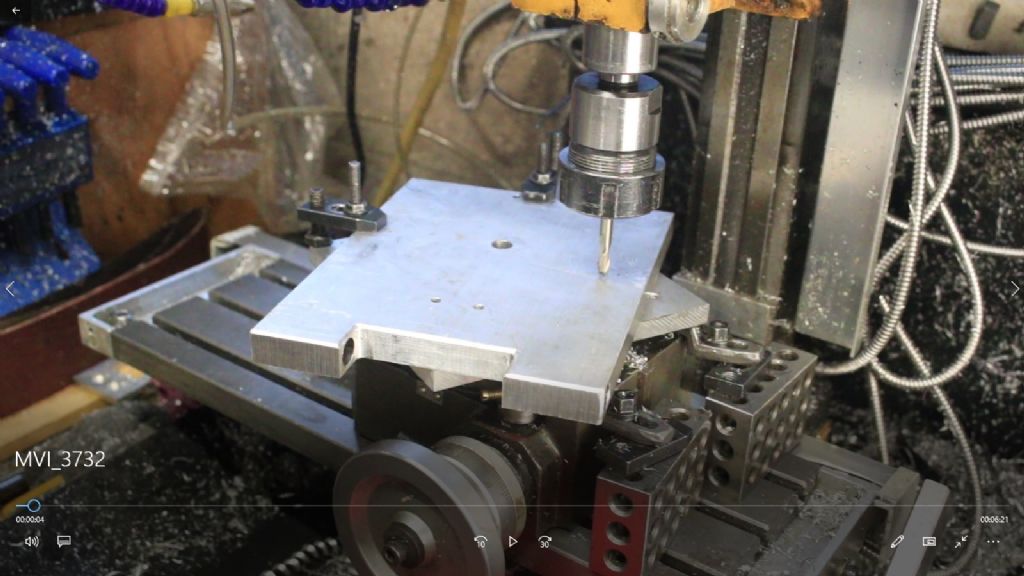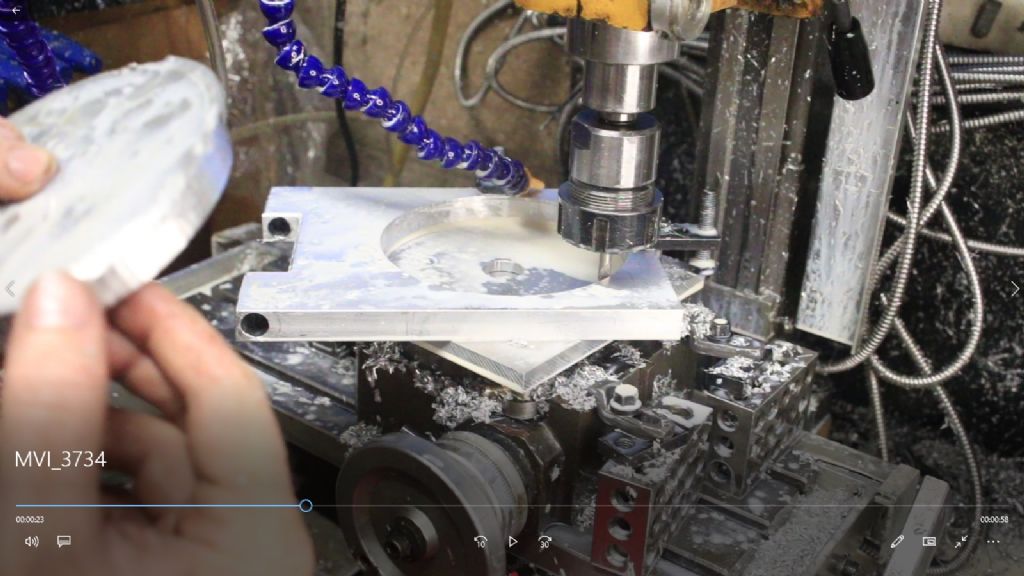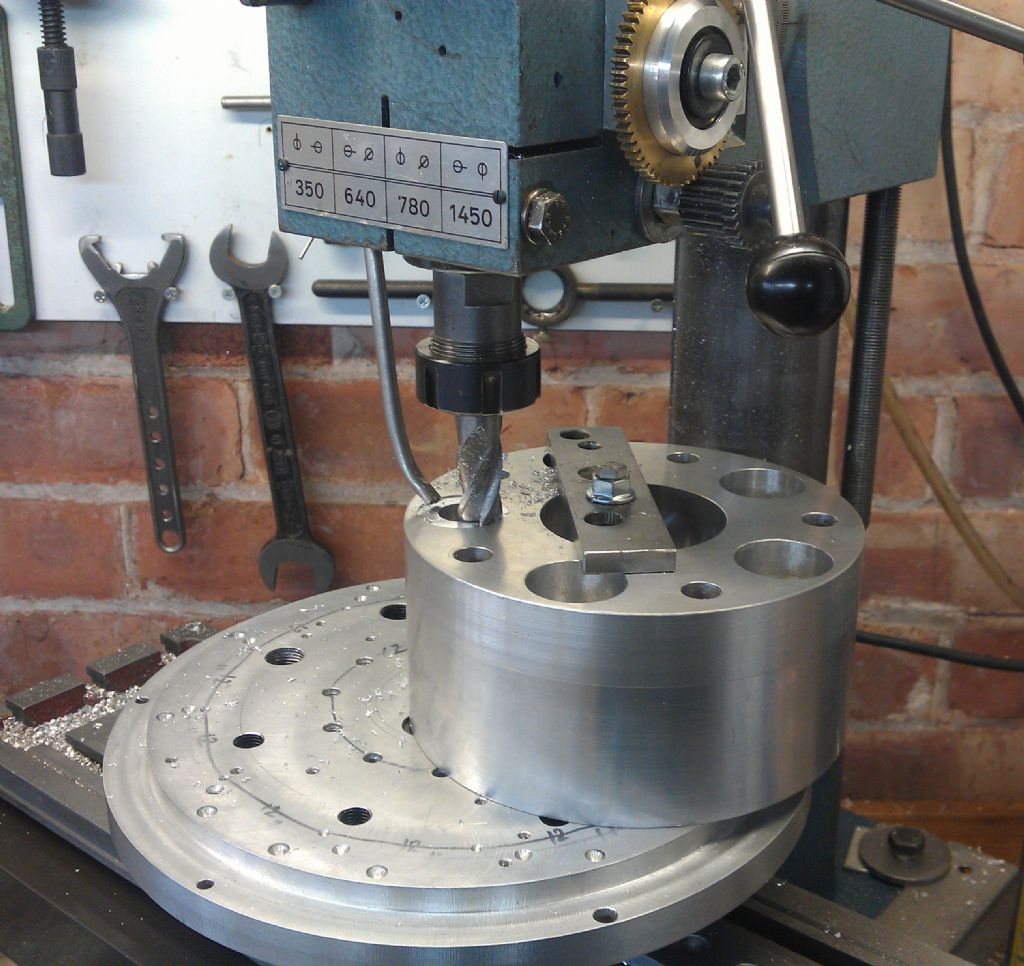Personally, I'd centre the rotary table to the spindle, drill a hole through the part, then put a rod the same size as the hole in the chuck, put the rod through the hole and clamp the work down to the rotary table, ensuring that you have a flat sacrificial piece of metal between the work and the table. Hopefully then table, work and spindle are all in alignment. I'd then use an endmill and move the spindle to 1-2 mm from your desired diameter ( taking tool offset into account) then mill in a circle and gradually increase the depth, being very careful when you get close to depth to not let the work break loose, you should be able to make the last cut so that it leaves a tiny web which holds it all together allowing you to prise the middle section out. Then you can move the table again to diameter for your finish cut
In my opinion this works better, I've done it many times before, it reduces waste and saves time rather than milling one gradually increasing circle starting at the centre.
All the best
Gaz


Edited By Gaz on 09/07/2023 00:42:56
Edited By Gaz on 09/07/2023 00:48:16
Edited By Gaz on 09/07/2023 00:48:36
DiogenesII.







